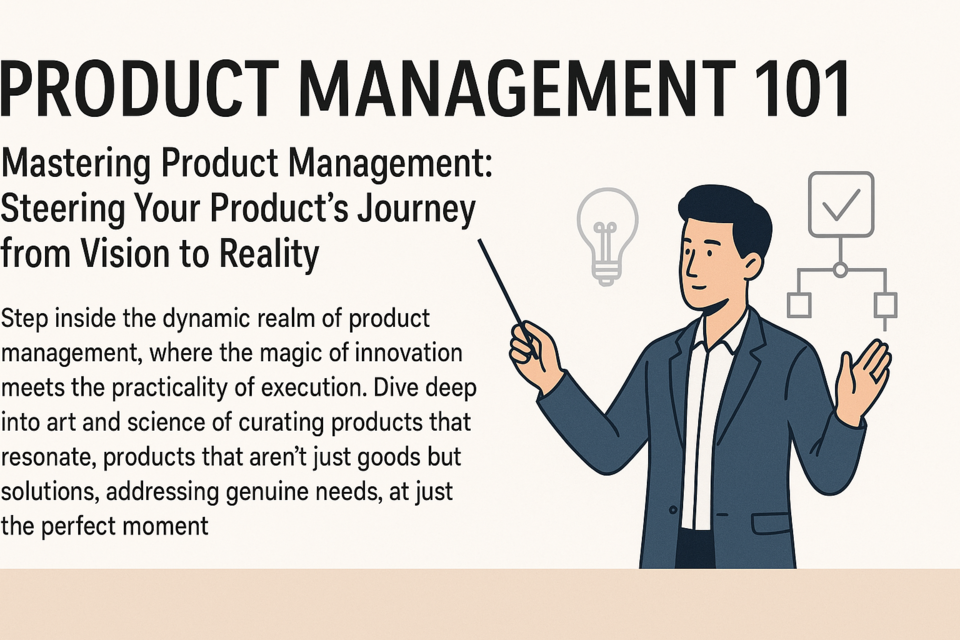Other Fields that make use of Case Studies
Case studies are a valuable way to study and learn about a person, group, place, event, a company or an organization. When most people think of a case study, they think of a psychological case study or a business case study.
But case studies are used in almost every field, and are incredibly valuable in all of them. Outside of psychology, sociology and business, here are the next five fields that utilize case studies.
Medicine
Case studies are a mainstay of medicine. In fact, when confronted with challenging cases, doctors look to past case studies to determine what the next course of action should be. Medical case studies are normally submitted to medical journals for publishing when they are completed.
The process of developing the medical case study is similar to that of other case studies, and follows the following steps.
1. Select the case � The key to the successful case study is finding a patient that has a rare or unusual sickness or illness. It is these unique cases that are most often selection by medical journals for publication.
When searching for a case, speak with physicians about which of their cases might make an interesting case study. Senior physicians are an invaluable source of information, since they have so much experience. They may even have notes or other resources that could be available to you.
2. Research the case � Review medical journals on the diagnosis that will be the focus of your study. Medical libraries are a great place to find journal articles or books that can provide background information.
3. Obtain Patient Information and Consent - You are required to obtain written patient consent before using a patient in your study. This is an ethical requirement. Most medical journals have their own forms that must be completed before your study can be published.
You will need to get all patient information, such as age, medical history, medications taken, etc. You want detailed info so that your audience will be informed about the case. You will also want to learn about any history of mental health issues, and if the subject has any emotional or mental issues.
4. Write the medical case study � The medical case study follows the same format as most case studies. It will have an abstract, introduction, and presentation of the case, possible solutions, and the conclusion. You will also have to include all references.
The abstract is a short written summary that will summarize the entire case study. The abstract is what is published in the medical journals, and will be your opportunity to "sell" your case study to readers.
5. Submit case study to professional medical journals � Normally you can only submit to one journal at a time. If your study is rejected, the publication will let you know why. Then you can choose to fix the study based on the journal's recommendations, or decide to submit to a different journal entirely.
In order for the FDA to consider drug trials, or for professional oversight committees to consider new methods of therapy, a case study must be published in a respected medical journal.
Law
The legal word is based on cases, so case studies are a mainstay of the legal world. Lawyers and judges are constantly referring to case studies when needing to make decisions and plan legal strategies.
The process of developing legal case studies is similar to that of other case studies, and follows the following steps. They use them throughout the entire trial process, from opening statements to closing statements.
1. Decide on the case � When choosing a case look to back events involving legal issues for ideas. Look for ideas in newspapers, case dockets, etc. The case you select should be the most appealing case possible that will be most interesting to the legal audience. Remember you want interesting cases, not necessarily famous or infamous cases.
2. Initial research � Review all secondary sources, and make observations. Once you have done all the preliminary research, conduct interviews as necessary. Be sure to have the cooperation of all participants.
3. Write first draft of case � This is where you should decide if you want to enhance objectives or the characters. This is the step where you want to get as much information down on paper as possible. You can return later to fix spelling and grammatical errors.
4. Supplemental research and final drafts � At this point you must do whatever secondary research is required to fix any inconsistencies or to clarify objectives or conflicts. Clear the first draft with your participants and get approval to publish.
Engineering
Engineering can cover many disciplines, from electrical, chemical, software, and even mechanical. The type of case study will determine how it should be formatted.
Historical case study � You will organize a historical case study as follows:
1. Context � What is the case being investigated? Make sure you focus only on the facts.
2. Approach � When researching the topic refer to ideas or theories so you can justify your interpretations. Highlight prior recommendations and solutions.
3. Conclusion � Make sure you can answer the following questions. What has been achieved since the situation or event, and have all of the recommendations been implemented? Also, be able to answer what could happen in the future.
Problem-oriented case study - You will organize a problem-oriented case study as follows:
1. Describe the case � Present the main idea you are analyzing and what decisions have been made. Make sure you focus on the facts!
2. Explain your methods � Be able to identify any problems in the study, and explain how you plan to analyze the information.
3. Present the summary � Make sure you can explain what solutions are acceptable and which are not.
4. Have an action plan � Your recommendations must be detailed. Your action plan should state who should take action and when.
Counseling
Counseling is one of those fields where case studies are essential. Since counseling isn't a perfect science, it heavily relies on studies of past cases to help guide them with existing clients. Counseling case studies are formatted similar to other medical studies.
1. Case history
Background information � The first part of the study is accumulating all of the patient's background information. This will include the basics, such as age, gender, work status, etc., but will also include the patients history of mental illness, any drug or alcohol use, as well as coping skills. Also note if there is any history of drug or alcohol use.
2. Description of the problem
The second stage of the study is to describe the problem that the patients has. The study must clearly detail the symptoms being experiences, along with any additional physical or sensory symptoms.
3. The diagnosis � This section should clearly lay out the diagnosis, based on the diagnoses from the Diagnostic and Statistical Manual. Make certain to explain how the patient's symptoms fit the diagnosis.
4. Intervention � Intervention is how the counselor plans on helping the patient. Some of the forms of intervention include:
-
1.Psychoanalytic � This section would describe how a psychoanalyst would solve the problem. Be sure to back up the information with relevant client resources.
-
2. Cognitive-Behavioral � This section would describe how effective cognitive behavior therapy might be for the patient. Make sure to note any problems or successes found during the treatment with the client.
-
3. Humanist � This section would describe how the humanist approach would work on the client. Again, as with the previous types of therapy, be sure to note all observations throughout the process.
When writing up the case study, don't use the terms "client" or "patient". Use their name or a pseudonym. Even if using a pseudonym, you must obtain informed consent before publishing the case study.
When writing up the study, use APA format and cite all references. Read samples and examples of other case studies to get a better understanding of the style and format best for a counseling case study.
Ethics
Ethics is one of the most subjective fields there is. Think about it. Ethics is basically the determination of what is right and what is wrong. Ethicists use case studies as support for new ideas and theories. The process of developing ethics case studies is similar to that of other case studies, and follows the following steps.
Choosing the topic � As with all case studies, choosing the topic is the first step.
What should you look for when choosing a topic? Here are some tips.
1. Choose a topic you find interesting. Conducting a case study is much easier when you are interested and engaged in the topic.
2. Choose a topic that will benefit you. You will spend a lot of time conducting the study, so make sure the topic will help advance your ongoing research.
3. Choose a topic that will fit within the time you have to complete the study. You don't want to end up in a study that you cannot complete due to time constraints.
4. Decide what you believe. You will see a lot of opinions for ethical topics, and you don't want those to sway you. Decide what you believe and stick with it.
5. Write your thesis, and refine as needed. A thesis can change as more information comes to light.
6. Consider any objections to your thesis. This is normal and essential, as you should be able to counter any objections thrown your way. This will help your ideas become clearer.
Before submitting the final paper, you must make sure you haven't made any mistakes, many of which are common in ethical case studies.
1. Don't use rhetoric. Rhetorical questions are used to dismiss an idea.
2. Don't use clich�s. Yes, ethical studies are subjective. But that doesn't mean you can use clich�s.
3. Make sure you know the meanings of words. Don't use big words just so you can sound impressive. Don't use dead words or extra words to make your study longer. Use the professional vocabulary used in the ethics field. Don't overwhelm your reader, and remember to consider your audience.
4. Be concise, and consistent! Don't be overly wordy or confusing. Get to the point and stick to it.
5. Proofread your case study over and over again. And when you are done, proofread it one last time. Do not rely on spellcheck or a grammar checker. Grammar checkers can't differentiate between affect and effect, or their/they're, there.
6. Use gender-neutral language. Use he/she or him/her. You want to read to believe the subject could be male or female.
7. Make sure you state whatever you are leaving out. You obviously can't cover all of the issues, and there is nothing wrong with that. In fact, it is important that your reader knows you are aware of other issues, but simply chosen not to include them.
8. If there is an issue you are undecided about, admit that. It is okay to be undecided. It is possible to see strong arguments on both sides of an issue, and not be able to decide which side you fall on.
Types of Workplace Case Studies
When people think of case studies, they usually imagine a psychological case study. And while case studies are most prevalent in the sciences, they are also heavily used in the business world.
Think about it. What better way to learn about business than to look back at those that have succeeded or failed in the past? Here are some of the most well known case studies in the business world. How many are you familiar with?
Tylenol Scandal
This case study was so valuable because it detailed a unique event that could not be replicated. This study is used today for many different reasons.
In 1982, when it was discovered that people were dying of cyanide poisoning after ingesting Tylenol capsule, the Tylenol brand almost collapsed. No one knew how the cyanide got into the capsules, but that didn't matter to people who took the medication. No one was willing to take the risk.
The parent company of Tylenol, Johnson & Johnson, started a marketing campaign to turn the product around. First, they stopped selling capsules, and only sold tablets or "caplets" in tamper-resistant packaging. Also, when the new safer packaging was released, they offered coupons for $1.50 off each bottle. This strategy worked, and Tylenol quickly regained the market share they had lost.
Key Takeaway: Being open, honest and proactive will help the company and/or product survive.
Workplace Drug Abuse
The Amber case study detailed employee drug abuse. "Amber" was an administrative assistant at a large company. When she started she was an excellent employee. But over time, her behavior changed and her work product suffered.
She started arriving late to work, and would offer call in sick. She would borrow money from coworkers, and fail to pay it back. She started treating customers poorly. Eventually, she was found using cocaine in the bathroom, and promptly fired.
This termination left a vacancy in the company that took months to fill.
This case study set up most of the employee drug use protocol that is used in business today. It is believed that if the employer addressed the problems earlier, they could have saved money and time, and might have also helped Amber. This study lead to programs to help identify drug use in the workplace, along with programs to help employees who might have a drug problem.
Key Takeaway: Identifying employee drug issues as early as possible are better for the employee and employer.
Hickory Farms
Most people of a certain age know of Hickory Farms. There were famous for their holiday gift baskets, and their expensive holiday catalogs. They sold meats, such as sausage and ham, as well as cheese and other food products.
However, as the use of the Internet increased, Hickory Farms started to lose sales. People weren't using catalogs as often, and it was costly Hickory Farms millions to maintain inventories of products that weren't selling. The company was in danger of bankruptcy.
In order to change this around, Hickory Farms slashed the number of products they sold. Originally they sold over 2500 products, but dropped that to just 300 products. They also modernized their visuals and packaging, and completely redid their website so it would be easier for shoppers to use their website.
Cutting all the products and streamlining the packaging saved the company money, which they were able to pass onto their customers. Hickory Farms continues to succeed to this day, and has been very helpful to other companies that find themselves in the same situation.
Key Takeaway: It is important to change with the times and stay modern.
Ryanair
Ryanair is a discount airline company located in Ireland. It was started by two brothers, the Ryan's, who wanted to take on the large airline companies. However, the airline business is extremely competitive with very little profit margin.
Ryanair knew in order to compete, they would have to offer cheaper flights than other airline companies. To do this, they cut costs wherever they could, and passed that savings onto their customers.
At first this wasn't popular. They cut all food service on planes, and removed small comforts such as pillows and blankets. They started to sell advertising and placed ads on seat backs. The airline seats didn't recline, and there were no seat-back pockets. This led to less garbage and the ability to clean the planes quicker.
Eventually, the promise of low fares won over the public. Their prices were so low that they were able to gain customers who normally could only afford to travel by ferry or train. Ryanair is now the largest airline company in Europe, and the largest international airliner.
Key Takeaway: Focusing on a single business model and streamlining costs can help a company challenge competitors.
Apple Computer
Everyone knows Apple, Inc. If you don't own an iPhone, you know twenty people who do. But did you know that Apple once was only known as a computer company?
Apple began as Apple Computer, and they were mostly known for their Mac, or Macintosh computers. However, while the Mac was a successful and valuable computer, it could never compete with the personal computer, or PC, for market share.
Therefore, Apple wanted to branch out and start selling new tech products such as the iPod and the iPhone. They would still make their iconic Mac's and MacBook's, but the company believed the future lied in handheld devices.
When Apple Computer changed its name to Apple, Inc., non-computer products already amounted to half of their revenues. The name change allowed it to break away from being a computer company. After all, would you want to buy a phone from a computer company?
Key Takeaway: If you can't beat a competitor head-on, find other routes to increase company revenue.
Developing the Business Case Study
Why would a business develop a case study? There could be numerous reasons, but one of the most popular is to help with sales.
For example, imagine a small software company that sells a product that streamlines the human resources departments of small companies. They want to find better ways to increase sales of their human resources computer program.
So, they decide to develop a case study. The company develops the study hoping that it will prove that businesses that use their program save more money than businesses that do not use their program.
To do this study, they will most likely hire an outside company to do the research and develop the study. It will also require companies that are currently using the product to agree to be in the study. Or, the company will have to give away their product in return for the business agreeing to be in the study.
If the study proves that the HR program saves businesses money, the case study will have been proven successful, and well worth the cost of developing it. If the case study proves the opposite, than it will be a sign to the company that it needs to work on the product and make improvements.
Developing a business case study is basically the same as developing any type of case study, and will follow the same steps.
1. What is the background of the case study? Why does the business world need this case study? Also, how much will the case study cost?
2. What is the problem that needs a solution? What is the situation, and what are the risks? This is the key part of the business case study. These studies exist to show other businesses how to better manage their companies, and how to be more successful.
3. What questions are required to analyze the problem? What questions might the reader of the study have? What questions might colleagues have? To proceed with the study the researcher must have a list of questions that could be answered through the process of the study.
4. What tools are required to analyze the problem? Is data analysis necessary? Will the study require quantitative analysis or qualitative analysis, or both?
5. What is your current knowledge about the problem or situation? How much background information do you need to procure? How will you obtain this background info? This will vary depending on the writer's relationship with the company. Some companies do their own internal case studies, while some outsource it to outside research companies.
6. What other information do you need to know to successfully complete the study? Will interviews be necessary? Will it be necessary for the researcher to observe the subjects?
This step is particularly important if the developer of the case study does not work for the company being studied. For example, a business student might want to do a case study on how to increase retention of employees. Obtaining data for this type of study could be challenging if the student doesn't have access to the company's information and resources.
7. How do you plan to present the report? Will it be a simple written report, or will you add PowerPoint presentations or images or videos? When is the report due? Are you giving yourself enough time to complete the project? How will the report be distributed?
Writing the Business Case Study
As with regular case studies, business case studies follow a particular format. However, there are addition steps you can take to make the study more interesting to the business reader. Here are the steps you should take when writing up your business case study:
1. The Title � The title should be short and to the point. You want the title to be compelling and focus on the most important accomplishment.
For example, which of the following titles do you think is most effective?
Examining the effect of the Internet on women's clothing catalog sales.
Or
What happens when a company that sells women's clothing via a catalog starts to lose money, and how to find ways to turn that around.
The first title is obviously much better. The title doesn't need to tell a story. It just has to clearly explain what the study is about.
2. The Executive Summary � The executive summary is a short paragraph of about 2-4 sentences that sums up the entire case study. You will want to accompany the summary with bullet points that demonstrate successes or failings.
3. About � The about section should introduce the reader to the company or business, as well as the key people involved with the organization. Write a paragraph about each key person, including their background and why they are needed or relevant to the study.
4. Challenges � This section should be about a page long, and should clearly detail all the challenges faced by the business. This could be about declining sales, employee retention, or any of many other business issues.
5. Solutions � This section should be about a page long, and should clearly detail all solutions found during the case study. Each solution should be listed, as well as how that solution was discovered. The solutions don't all have to be successful. In fact, just as much can be learned from unsuccessful solutions as successful ones.
6. Results � This section should be about a page long, and should clearly lie out the results of the study. This is where you prove to the reader that you had a problem and found a solution to it.
7. Visuals or Supporting Documents � This section should include any relevant images, charts or graphs that will help the reader better understand the goals of the case study. However, do not overuse images.



























